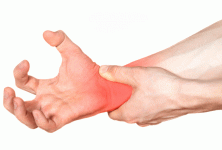
Marzo 2018 – Vitamin D is necessary for the regulation of calcium and phosphate in the human body and decreased levels can alter the bone mineralization process. There is a high prevalence of vitamin D deficiency in the general population and low vitamin D is associated many disorders such as rickets and osteoporosis.1
Despite large successes in treating vitamin D disorders in children, there is still a global crisis of sub-clinical vitamin D deficiency in all age groups. Although various methods of measuring vitamin D deficiency exist, the focus of this course will be on 25(OH)D testing and vitamin D3 supplementation which is the best studied. Other vitamins and minerals such as vitamin K ( carboxylates osteocalcin so it can be build bone), boron ( stabilizes and extends half life vitamin D and estrogen), silicon ( attracts calicum) and magnesium ( needed to form bone) are also important for bone health.
Humans acquire vitamin D through sun exposure and diet. Thus, vitamin D levels are influenced by an individual’s diet, geographic latitude, season, skin tone, and body habitus. With regard to sun exposure, Vitamin D3 is produced by the skin as a result of ultraviolet radiation. Although it is possible to obtain sufficient vitamin D through exposure to sunlight, this has fallen out of favor as a routine treatment due to a lack of feasibility in the industrialized world as well as due to the carcinogenic effects of ultraviolet radiation on the skin. Thus, there has been an increasing prevalence of Vitamin D deficiency due to avoidance of the sun as well as the extensive use of sunscreen as part of a western lifestyle. This leaves dietary supplementation as the preferred mechanism for correcting decreased vitamin D levels.
In children, the stated goal is to optimize 25-OH Vitamin D levels in order to minimize fractures, maximize mineralization of growing bones, help attain optimal peak bone mass, obviate secondary hyperparathyroidism, and assist in fracture healing. Clinical hypovitaminosis D in the form of rickets has all but been eliminated from the US with the widespread adoption of vitamin D fortified milk. With that in mind, the effects of subclinical vitamin D deficiency are much less clear. Unfortunately, the American Association of Pediatrics has no recommendations for routine checking of 25-OH Vitamin D levels of children not already on an “at risk list” which include children have other disorders predisposing them to poor nutrition or bone health. Nevertheless, certain studies reveal sub clinically low 25-OH Vitamin D levels in many otherwise healthy children2,3. Still, the exact effect of vitamin D insufficiency on pediatric patients is unclear.
One study examining fracture risk found no relationship between vitamin D deficiency and fracture risk in the study population4. Another study of 1031 children, found similar results5. In the latter study there was a significant difference in 25-OH Vitamin D between surgical fractures and nonsurgical fracture patients. The odds ratio for a surgical fracture by 25-OH Vitamin D cutoff was very significant. Those with 25-OH Vitamin D between 20-30 ng/mL were at twice the risk to sustain a surgical fracture as those with 25OH(D) levels of greater than 40 ng/mL. Those below 20 ng/mL were 6x more likely and those below 12 ng/mL were 55x more likely to sustain a fracture that needed surgery. Thus the likelihood of sustaining a surgical fracture was increased when the 25-OH Vitamin D was < 40ng/mL but the overall risk of sustaining a fracture did not appear to be dependent on the 25-OH Vitamin D level.
A meta-analysis of randomized controlled trials revealed that supplementation with vitamin D lowers the risk of hip fracture by 26% and any non-vertebral fracture by 23%. The study conclude that oral vitamin D supplementation between 700 and 800 IU/day appears to reduce the risk of hip and nonvertebral fractures in ambulatory or institutionalised elderly people. However, a dose of 400 IU/day is insufficient for fracture prevention 6.
Resource: Vitamin D from Pediatrics to Geriatrics in Orthopaedics
Barbara Minkowitz, MD Medical Director Pediatric Orthopedics, Atlantic Health Systems
References
1.Holick MF. Optimal vitamin D status for the prevention and treatment of osteoporosis. Drugs Aging. 2007;24(12):1017-1029.
2. Lee JY, So TY, Thackray J. A review on vitamin d deficiency treatment in pediatric patients. J Pediatr Pharmacol Ther. 2013;18(4):277-291.
3. Melamed ML, Kumar J. Low levels of 25-hydroxyvitamin D in the pediatric populations: prevalence and clinical outcomes. Ped Health. 2010;4(1):89-97.
4. Contreras JJ, Hiestand B, O’Neill JC, Schwartz R, Nadkarni M. Vitamin D deficiency in children with fractures. Pediatr Emerg Care. 2014;30(11):777-781.
5. Minkowitz B, Cerame B, Poletick E, et al. Low Vitamin D Levels are Associated With Need for Surgical Correction of Pediatric Fractures. J Pediatr Orthop. 2017; 37(1):23-29.
6. Bischoff-Ferrari HA, Willett WC, Wong JB, Giovannucci E, Dietrich T, Dawson-Hughes B. Fracture prevention with vitamin D supplementation: a meta-analysis of randomized controlled trials. JAMA. 2005;293(18):2257-2264









